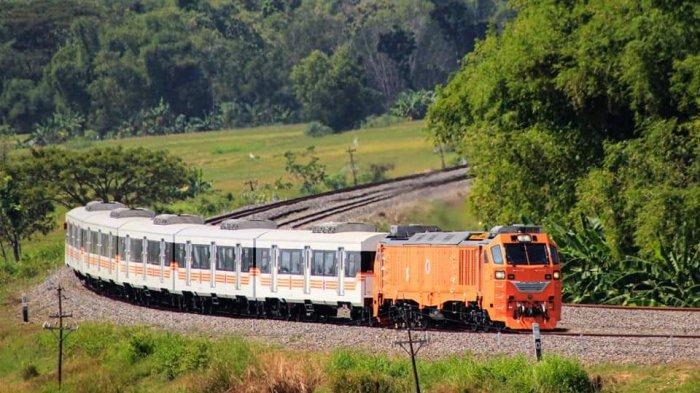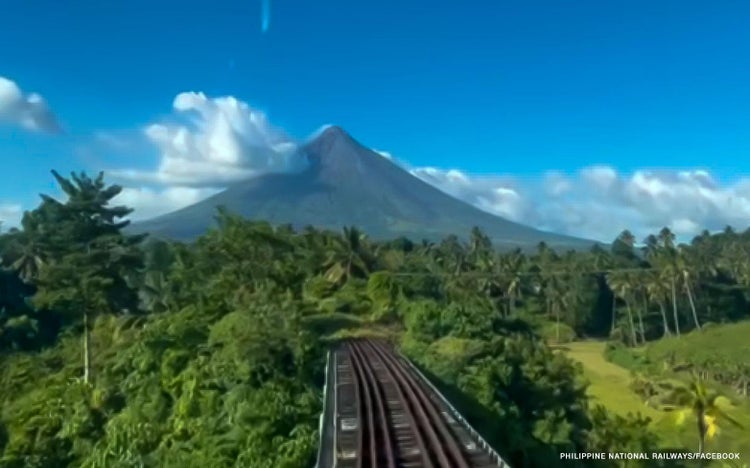GET READY FOR A SCENIC TRAIN RIDE through the heart of Bicol! The Philippine National Railways (PNR) has finally reopened the Naga-Legazpi route after six years, bringing back a cherished mode of travel and a vibrant connection between two of the region’s most dynamic cities.
This 2023 Christmas season, the familiar whistle of the train echoes through the countryside once again. The journey kicks off with a 5:45 a.m. departure from Naga City, winding through 101 kilometers of breathtaking landscapes in Camarines Sur and Albay. With four daily trips each way, the Naga-Legazpi route offers a convenient and affordable option for both locals and tourists.

Whether you’re a commuter seeking a comfortable ride or an explorer yearning for a unique adventure, the PNR promises a memorable journey. Traverse charming towns like Pili, Iriga, Polangui, Ligao, and Daraga, each with its own cultural treasures and vibrant communities. Soak in the panoramic views from your window, watch the sun rise over Mayon Volcano, or simply relax and enjoy the rhythmic chug of the train.
And the best part? The fares are incredibly budget-friendly, ranging from P15 to P155 depending on your destination. Senior citizens, students, and persons with disabilities can enjoy a 20% discount, making travel even more accessible.
So, ditch the traffic and embrace the nostalgia! Hop onboard the PNR Naga-Legazpi train and rediscover the magic of Bicol. Explore hidden gems, savor local delicacies, and connect with the warmth of the Bicolano people. This is more than just a train ride; it’s a journey back to the heart of a region pulsating with culture, history, and breathtaking beauty.

WHAT THIS MEANS TO PHILIPPINE TOURISM IN BICOL
The reopening of the Naga-Legazpi PNR route has several potential implications for Philippine tourism:
Positives:
- Improved Accessibility: It provides a new and accessible option for tourists to travel between Naga and Legazpi, both popular destinations in Bicol known for their natural beauty, cultural heritage, and festivals. This could attract more tourists to the region and contribute to regional economic development.
- Enhanced Scenic Travel: The train journey itself offers a unique and scenic way to experience the Bicol region, passing through charming towns and stunning landscapes. This could appeal to tourists seeking alternative travel experiences beyond typical flights and buses.
- Promotion of Local Tourism: The restored train service may encourage domestic tourism within the Bicol region, making it easier for locals to explore nearby destinations and contribute to local economic activity.
- Support for Sustainable Tourism: Trains are generally considered an environmentally friendly mode of transportation compared to cars and buses. This aligns with the growing trend of sustainable tourism and could appeal to eco-conscious travelers.
Challenges:
- Limited Capacity: With only four daily trips, the train’s capacity might not be able to fully meet the demand during peak tourist seasons. This could lead to congestion and booking difficulties.
- Competition with other Modes of Transport: The train will compete with existing air and bus connections between Naga and Legazpi. Tourists might still opt for faster or more convenient options.
- Promotion and Awareness: The PNR needs to effectively promote the reopened route to both local and international tourists to ensure its success.
Overall, the reopening of the Naga-Legazpi PNR route has the potential to positively impact Philippine tourism by offering a new and scenic travel option for tourists and promoting local economic activity. However, addressing capacity limitations, competition, and effectively promoting the route will be crucial for maximizing its success and contribution to the overall tourism industry.
NOTE TO READER
It’s important to note that these are just potential implications based on available information. Further research and data on tourist flows, travel preferences, and the performance of existing transportation options within the region would be necessary for a more detailed assessment of the route’s impact on Philippine tourism.
/withhelpfrombard

 inka
inka

